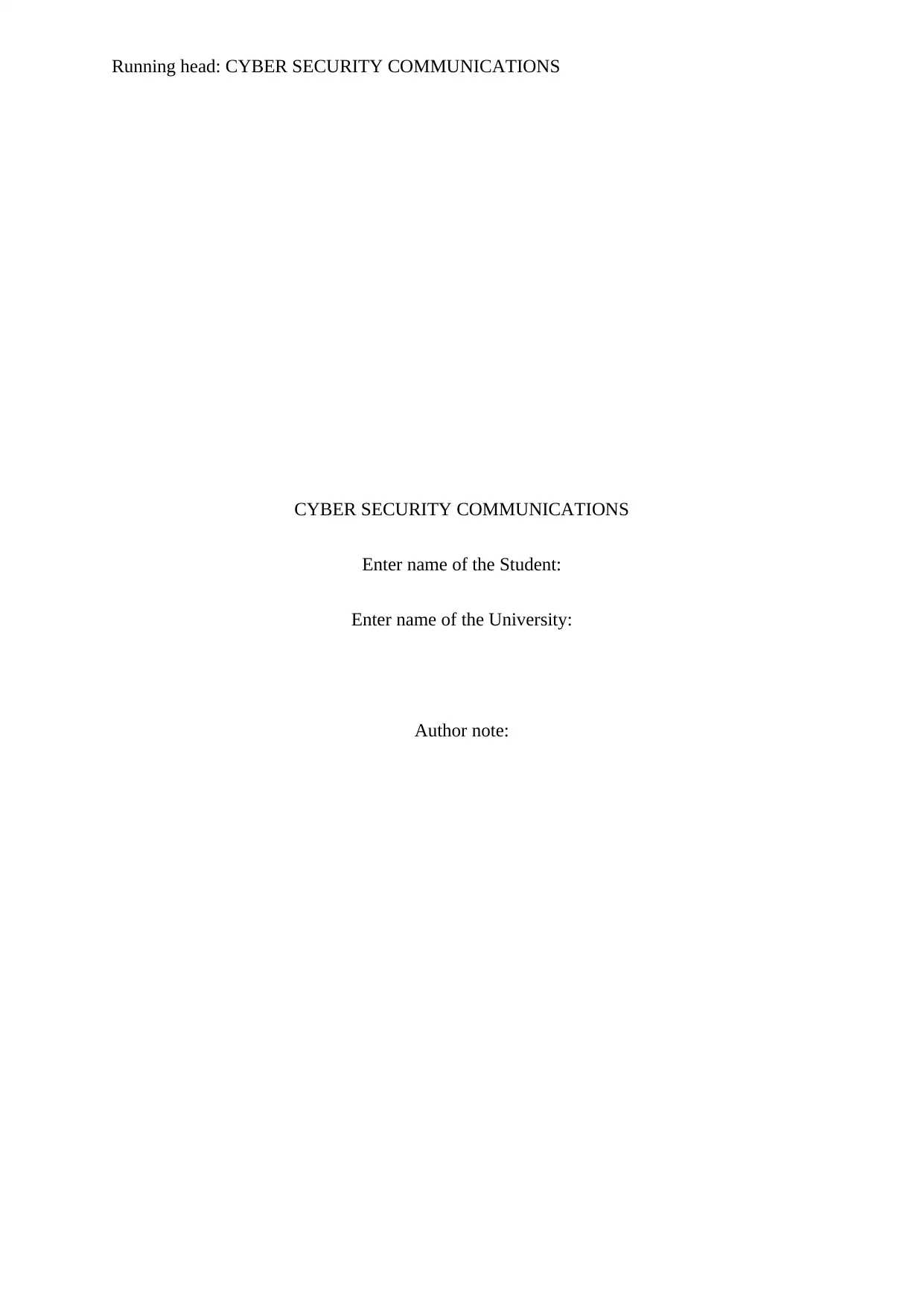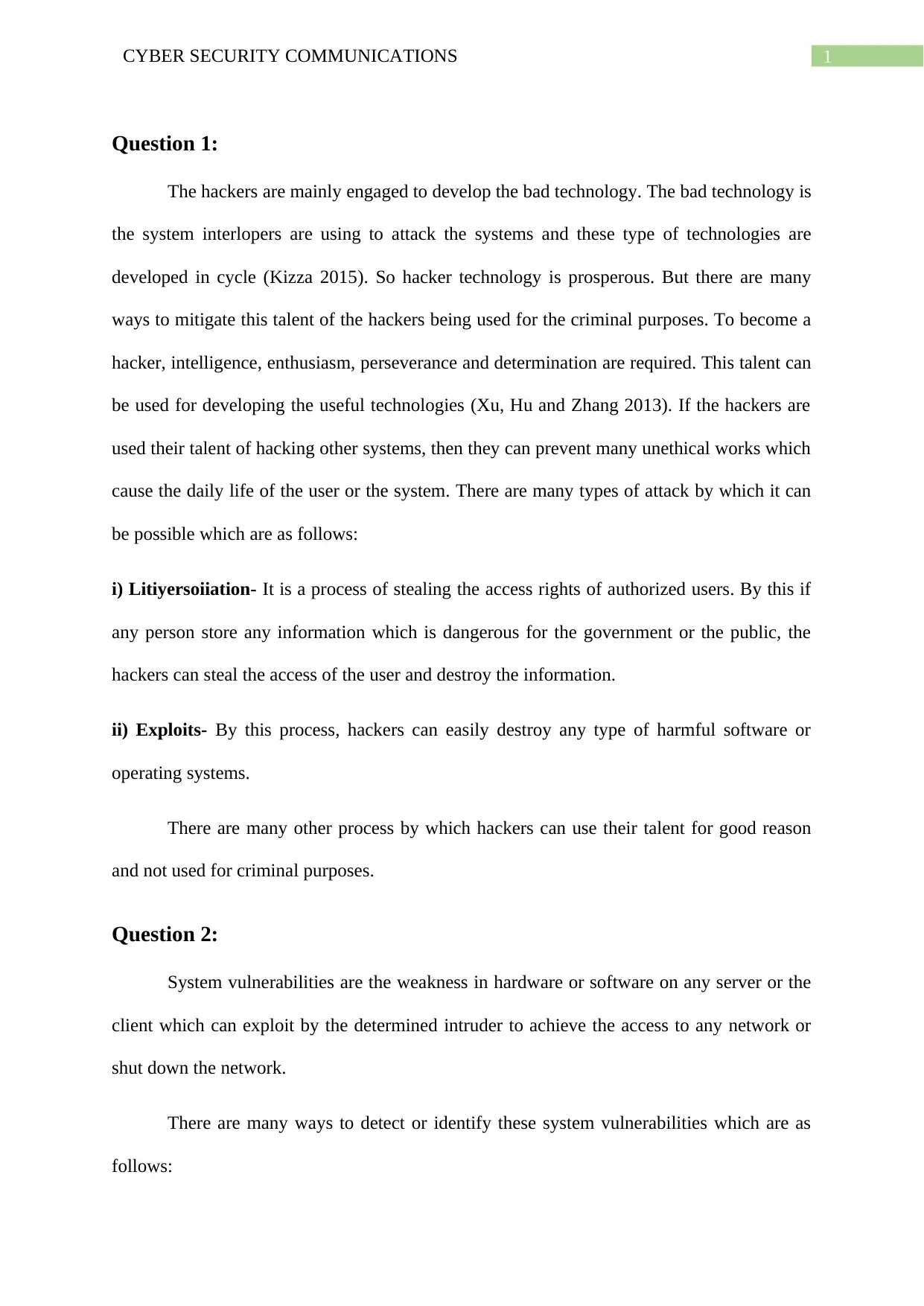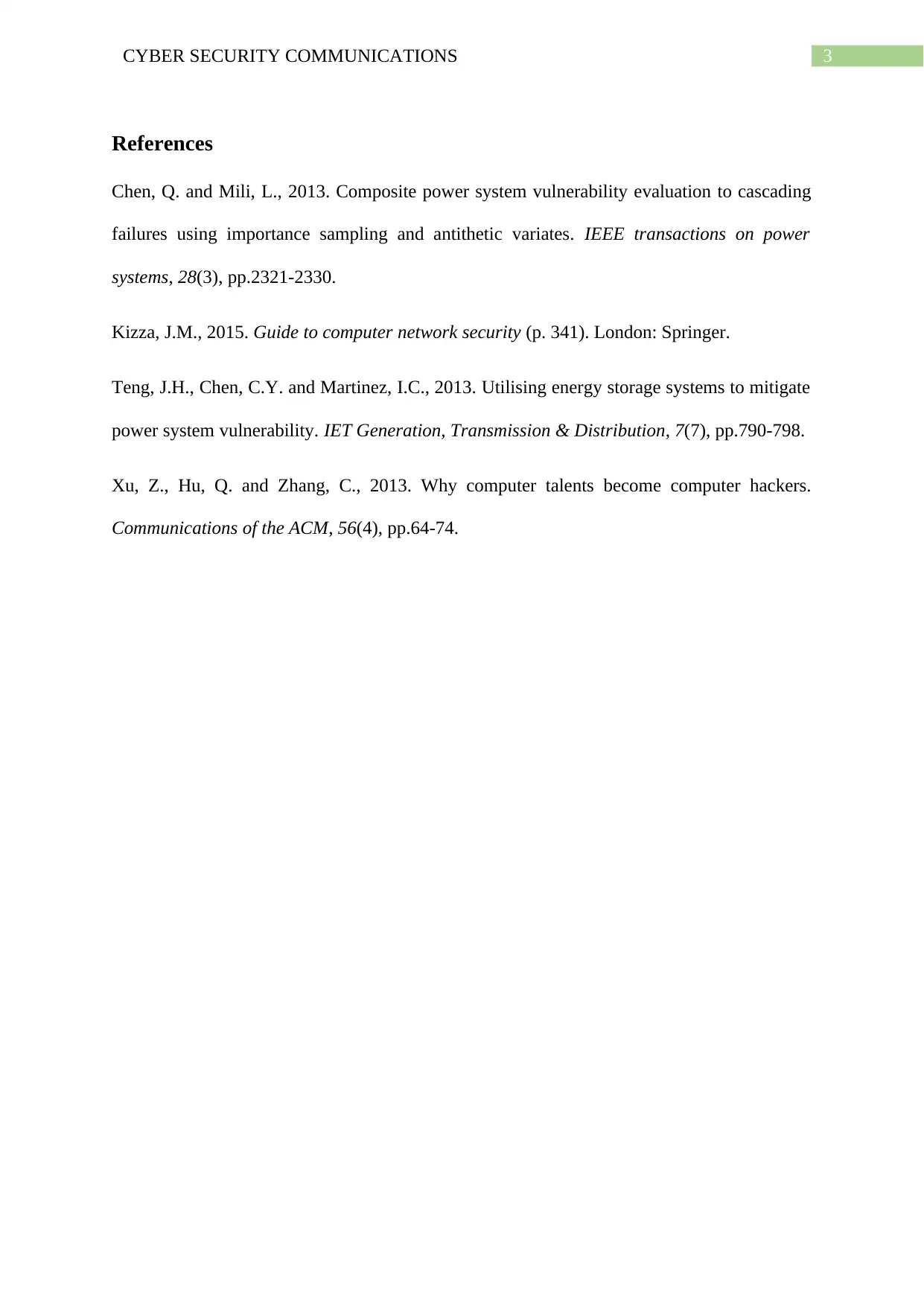Cyber Security Communications Assignment - University Name
VerifiedAdded on 2022/08/25
|4
|636
|31
Homework Assignment
AI Summary
This assignment delves into the realm of cyber security, examining the dual nature of hacker talent and its potential for both malicious and beneficial applications. It explores how hackers leverage their skills to exploit system vulnerabilities, which are weaknesses in hardware or software that can be exploited to compromise a network. The assignment discusses various methods for identifying and mitigating these vulnerabilities, including penetration testing, security audits, and the implementation of software security solutions. The student's work addresses the importance of understanding cyber threats, such as impersonation and exploits, and proposes ways to channel hacker expertise towards developing secure technologies and preventing cybercrimes. The assignment also highlights the need for continuous monitoring and proactive security measures to safeguard systems from evolving cyber-attacks.
1 out of 4










![[object Object]](/_next/static/media/star-bottom.7253800d.svg)